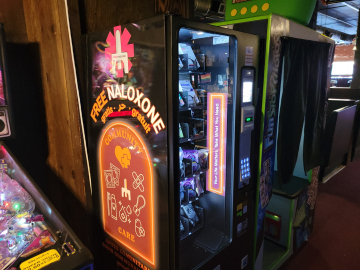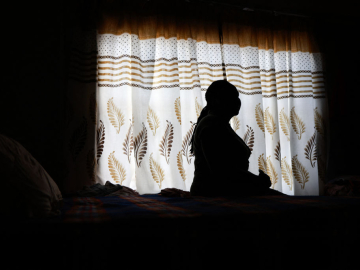Tapping Student Potential: Q&A on DNDi’s Open Synthesis Network with Ben Perry
In its quest to develop new treatments for neglected diseases that are often overlooked by the major drug companies, the Drugs for Neglected Diseases initiative (DNDi) launched the Open Synthesis Project (OSN) to tap an under-utilized talent pool: students. Since last year, OSN has brought together 5 universities from India, the UK and the US to help identify new drug leads for visceral leishmaniasis (VL). Benjamin Perry, DNDi’s senior discovery manager, explained to GHN’s Dayna Kerecman Myers how this effort works and benefits students and research prospects alike.
What is different about the Open Synthesis approach?
Typically, synthetic chemists—people who design and create entirely new, previously unknown chemicals and evaluate them as new drugs and other products—perform their work in the labs of the big pharma & biotech companies, or at Contract Research Organizations (CROs, often based in Asia). Looking for alternative resources to draw into the fight against neglected diseases, DNDi started thinking about university training labs. Almost all chemistry degree courses require some element of practical training in organic synthesis, and those students specializing in organic chemistry can dedicate a significant amount of time to training up their practical skills. In most cases these trainings consist of groups of students making samples by repeating well-trodden and established synthesis of known molecules. Instead, the OSN affords these chemists-in-training the opportunity to hone their skills through synthesis of compounds for our drug discovery projects. While in theory the skills required and learned for both approaches are the same, the OSN approach offers students the chance to observe and make a meaningful contribution to a real-world drug discovery project at the same time.
How do you hope the project will prove to be a game-changer in identifying new drugs for neglected diseases?
I see OSN as an alternative way of facilitating drug discovery and exposing students to the discipline, and to the world of neglected disease research. One advantage OSN efforts have is that they strengthen and forge new links between DNDi and academia, and oftentimes this can lead to unexpected ideas and collaborations. This is something we’ve already seen from our first year of the network being active, with alternative proposals and ideas coming not just from the students but also from the academic PI’s involved in running the teaching labs. These are not necessarily interactions or ideas we would have accessed without the OSN.
What are the challenges to allowing students to participate in real-life projects, and what hurdles did DNDi have to overcome to make it possible?
The main challenge is the intellectual property (IP) situation and stance of the university tech transfer offices (TTO). DNDi is not the first organization to think of engaging university students in the synthesis of compounds for drug discovery projects, but most other efforts collapsed due to the complex, highly constrained IP negotiations required. Unlike pharma & biotech, DNDi has an underlying “no IP” philosophy underlining our research, and we insist that no one involved in the OSN efforts (DNDi or institution) takes any IP stance on any of the results—we aim to collectively put all results into the public domain as soon as possible. As long as we’re able to convince the TTOs and universities to accept this philosophy, we can go ahead.
What inspired the decision to launch with a focus on drug leads for visceral leishmaniasis?
Our early discovery team is focused on a handful of neglected tropical diseases, with visceral leishmaniasis (VL) and Chagas disease the main focus currently. The particular DNDi discovery project we deemed most suitable for the launch of the OSN happened to focus exclusively on VL. As with all diseases tackled by DNDi, there is a huge unmet need for VL, with all existing treatments far from ideal due to efficacy, toxicity and/or cost. DNDi has many different projects ongoing focusing on identifying novel chemical matter which could be used to improve on and hopefully supersede the current treatments for VL. This particular project is focused on new oral compounds with short dosing regimen and a significant improvement in the toxicity/side effect profile relative to the existing treatments.
If the visceral leishmaniasis effort proves successful, what other neglected diseases might be next?
Aside from other, different VL projects, we might focus on Chagas disease, certain helminths, and mycetoma, as well as antimicrobial resistance—which DNDi began working on in 2016 in partnership with WHO in a new initiative called the Global Antibiotic R&D Partnership, or GARDP.
What strengths do the first 5 university partners bring to the project?
Aside from the synthetic chemistry manpower, the universities each bring a different perspective and approach to the project. Universities decide how they want to engage with the OSN, influenced by their individual needs, curriculum and syllabus. The ideas and contributions from each will be different because of the nature of the students and PIs involved in the project. For example, Imperial College happens to have a research group with significant expertise in chemical proteomics, and chose to have one of their contributing students work exclusively on understanding how and why the chemicals we make kill the parasite via this technique. This is not something DNDi would have had the capacity to explore without the OSN.
Join the thousands of subscribers who rely on Global Health NOW summaries and exclusive articles for the latest public health news. Sign up for our free weekday enewsletter, and please share the link with friends and colleagues: Subscribe to GHN
iStock





